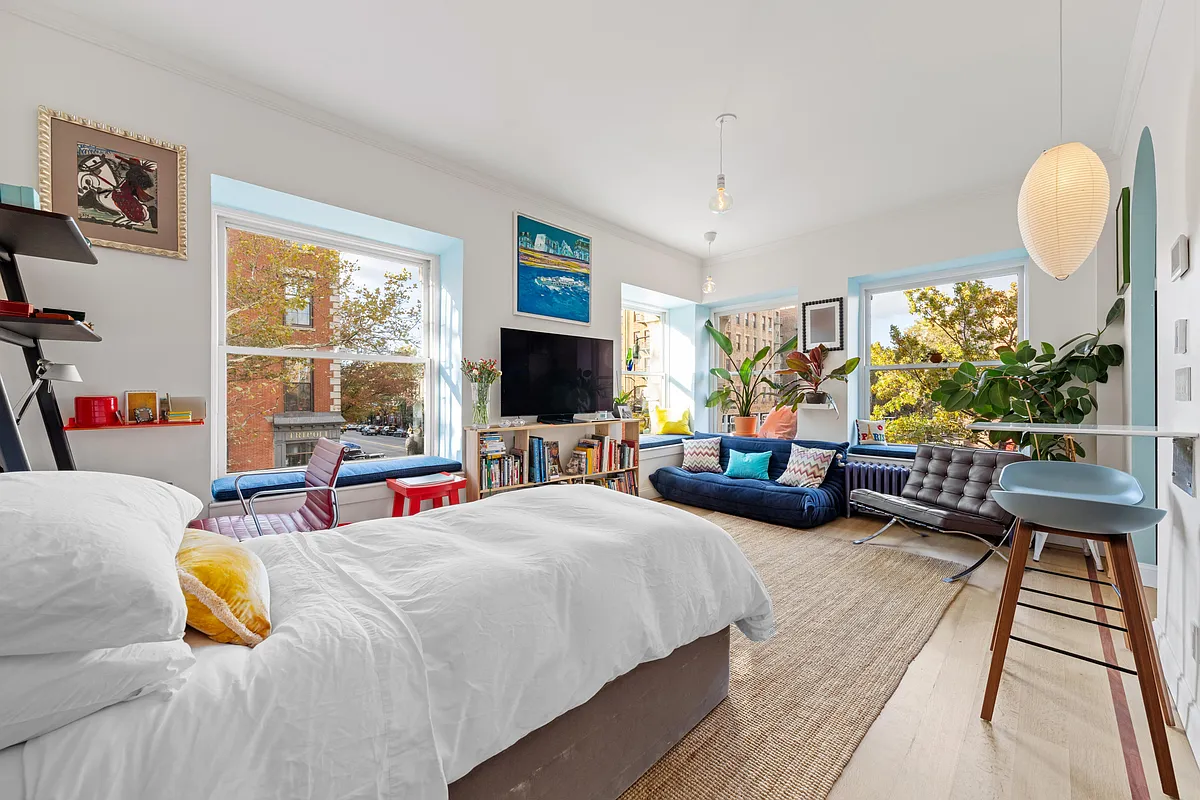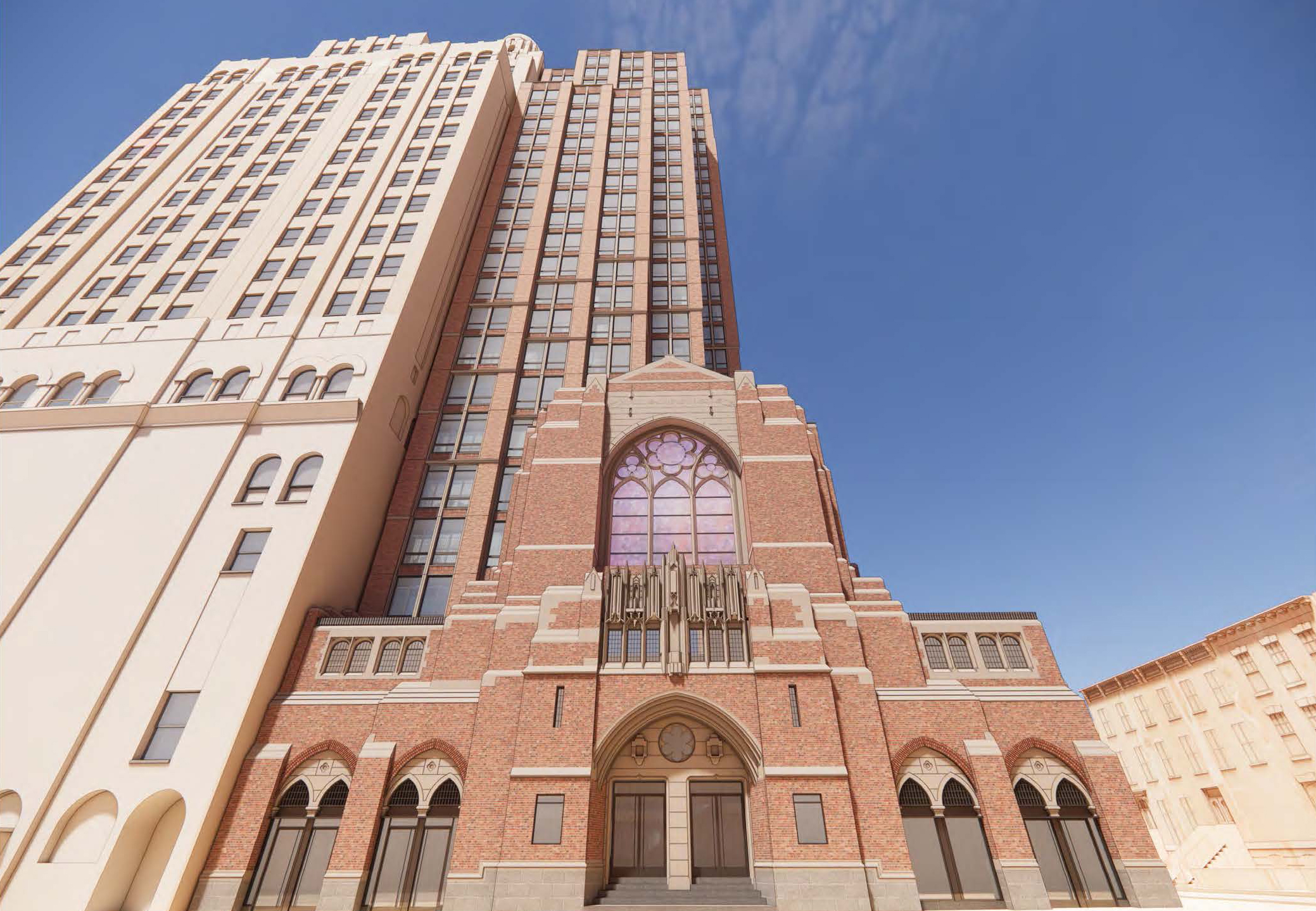Bed Stuy's Star Continues to Rise
According to The Sun, things got so bad in Bed Stuy back in the 1980s that one local precinct spray-painted (officers tagging?) the words “The Alamo” on the wall of the station house. Two decades later, crime is down and property values are up, though not everyone–including long-time renters and property owners who resent newcomers…
According to The Sun, things got so bad in Bed Stuy back in the 1980s that one local precinct spray-painted (officers tagging?) the words “The Alamo” on the wall of the station house. Two decades later, crime is down and property values are up, though not everyone–including long-time renters and property owners who resent newcomers benefiting from what they see as the fruits of their labors–think the trade is worth it. Crime’s down 70 percent or so since 1990, roughly in line with city-wide trends, while brownstone values have just about doubled since 2003. “People don’t feel quite as safe as the police reports, but they feel a lot safer than five, ten or fifteen years ago,” said Colvin Grannum, head of the Bedford-Stuyvesant Restoration Project. Change is coming from out as well as within: In addition to the Home Depot that opened last year, spots like Bushbaby, a gourmet coffee shop started by a Bed Stuy native, are starting to replace the nail salons and bodegas.
Renaissance Comes to ‘The Alamo’ [NY Sun]





Anonymon, I think you could do well, especially in that location, as it is on the main drag, near transportation, etc, etc. There has long been a large population of residents in BS who prefer organic, natural and vegetarian products. Those customers, plus many of the newer residents of the area could certainly provide you with a good customer base. I would love to see a business that does all of the above, with good,fresh veggies and fruits, perhaps baked goods, prepared meals and/or salad bar, and a section for natural personal care products: soaps, shampoos, etc. I’d be one of your best customers, as I have to go outside of the community for many of these things.
Nice discussion. Thank you. My wife and I interested in starting a small business in BS, so we were intrigued by “Tony’s Country Life Health Supermarket” going for sale:
http://www.bedstuygateway.com/2006/06/business_for_sa.html#more.
This discussion has inspired us to ask, what would residents (old and new) like to see in such a “health supermarket” in the area?. We are interested in providing a community business, one that caters to a broad range of residents, but that offers products we believe in and want to promote (see, organic). You never know….
12:23, the point of the conversation is not whether or not Starbucks is a great company to work for, or even that they pay their employees health insurance, or that their employees and customers look like the UN. All of those things are great, but totally irrelevant to the overall conversation.
The point is that while you may be able to pay $4 for that coffee, no matter who provides it, a great many people in Bed Stuy can’t. Unfortunately, and perhaps undeservedly, Starbucks is a symbol of gentrification, and yuppie creature comforts, and to many, the beginning of the end of their neighborhood as they know it. To many, if Starbucks opens in the neighborhood, soon it will be too expensive for them to live in that neighborhood.
Pietro- I meant it in the context of protecting one’s community from disappearing, not protecting it from someone else. Every culture has wonderful things to teach, and to be appreciated for. It’s healthy to want to promote that- just not as the cost of destroying someone else’s ethnicity. Sorry- I thought I was clearer. But I do agree. NYC is not as integrated as as we think, but I think there’s a difference between not being integrated and being segregated. People live in communities, and want to live in communities where they are comfortable with their neighbors. So many neighborhoods are not integrated simply because people tend to gather with those they know. Segregation is when the government and community band together to forcibly keep a particular group separate. Maybe in many ways the end result seems the same- people can get too insular, and biased- but in context they are different.
Besides, how interesting would NYC be if we were all alike? 🙂
Bx2Bklyn,
europe and canada and new zealand etc. wasn’t trying to be smug. believe me i’m well aware of the problems over there. i was just pointing out that new york isn’t as integrated as people like to believe.
i’m not claiming reverse discrimination. others may have tho. i understand the impulse to preserve heritage and culture. i think your word choice of “protection” is interesting. Protection from what? from whom? i’m not your enemy.
True, neighborhoods are always changing. But how they change is what’s important. The mark of any society is in the details- how well do you treat the most vulnerable, the poorest, the angriest, the sickest. I won’t say that NYC is not “segregated” but it is not the segregation of the old South.
I have never heard anyone complain about Little Italy being Italian or Chinatown having a majority of Asian residents. Or the Jewish neighborhoods of the Lower East Side. There have always been ethnic neighborhoods and they have always been seen as pluses- interesting, exotic, educational. Each of those areas have great ethnic and cultural atmosphere that everyone enjoys. Harlem should be the same- recognized for its rich Black history and culture. Its unique and important. Why should we celebrate Little Italy and Chinatown but complain if Harlem wants to keep as much of its cultural and ethnic integrity as possible? How do you think those areas maintained their identity for so long? Yet they are perceived as “keeping people in”, while Harlem and Bed-Stuy are keeping people out? Isn’t it a city’s loss that the lower East side has lost so much of its ethnic flavor?
Pietro- I wouldn’t be so smug about Europe. Its had more than its share of ethnic problems and many times the solutions have been far more heinous than in the States. Maybe Europeans just don’t like to see whats in their own yards- France has had ethnic riots, Germany had camps, England has its Muslim enclaves. Every country had its Jewish Ghettos. I could go on but you get the idea. But while you are trying to make it a reverse discrimination issue, it is really an issue of self-preservation and protection.
“What good is a Starbucks on Fulton Street when 70% of the neighborhood can’t afford the coffee?”
I’m going to ignore 99% of this conversation and point out the one simple fact that 99% of you on both sides always miss when you bring up ‘The Starbucks’ issue:
Starbucks, unlike your mom and pop store and unlike your trendy store run by RISD grads, gives its employees health insurance. Furthermore, if some of you snobs ever went into a Starbucks you might notice that they tend to serve a really wide demographic of people. Starbucks is a place to hang out. In any neighborhood that’s a valuable asset.
Personally I’d rather pay $4 for a cup of coffee to support that than not.
Neighborhoods in NYC are forever changing. The present situation (and reaction to it) is no different from those in the past.
Deal with it.
think you made some good points, renee. however, (and i’m not trying to fan the fires) i disagree slightly about new york not being segregated. having lived overseas for a number of years, i get a lot of international visitors and they are blown away by the segragation in new york and this notion that you have to stick with your kind. i do think this is particularly entrenched in brooklyn. queens on the other hand is probably the most mixed borough.